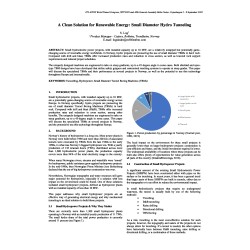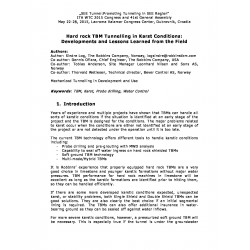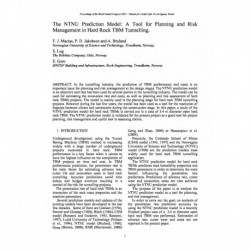No document
Search & filter
Search for a publication
Search & filter
List of products by author: S. Log
-
A Clean Solution for Renewable Energy Small Diameter Hydro Tunneling
Abstract: Small hydroelectric power projects, with installed capacity up to 10 MW, are a relatively untapped but potentially gamechanging source of renewable energy worldwide. In Norway, hydro projects are pioneering the use of small diameter TBMs in hard rock. Compared with drill and blast, TBMs offer increased production rates and reduction in cross section, as well as lowered rock support requirements...
0,00 € -
Hard rock TBM Tunnelling in Karst Conditions: Developments and Lessons Learned from the Field
Abstract: Years of experience and multiple projects have shown that TBMs can handle all sorts of karstic conditions if the situation is identified at an early stage of the project and the TBM is designed for the conditions . The major problems related to karst occur when the conditions are either not identified at an early stage of the project or are not detected under the operation until it is too late...
0,00 € -
The NTNU Prediction Model: A Tool for Planning and Risk Management in Hard Rock TBM Tunnelling
Abstract: In the tunnelling industry, the prediction of TBM performance and costs is an important issue for planning and risk management at the design stages. The NTNU prediction model is an objective tool that has been used by several parties in the tunnelling industry. The model can be used for estimating the excavation rate and costs, as well as planning and risk assessment of hard rock TBMs projects....
0,00 € -
The return of TBMs to Norway at Røssåga HEPP – TBM operation through extremely hard rock, unstable rock mass and...
Abstract: The breakthrough of the TBM at the Røssåga HEPP on 10 December 2015 signaled that the first TBM breakthrough in Norway in more than 20 years was a fact. The Robbins TBM was delivered as an Onsite first time assembly (OFTA) in January 2013 and was ready to bore less than 11 months from when the contract was awarded. During the excavation the TBM encountered extremely hard rock (over 280 MPa),...
0,00 €




